How To Use Self Clean Frigidaire Gallery Oven
4 Reasons to Stop Using Self-Cleaning Oven Feature Immediately
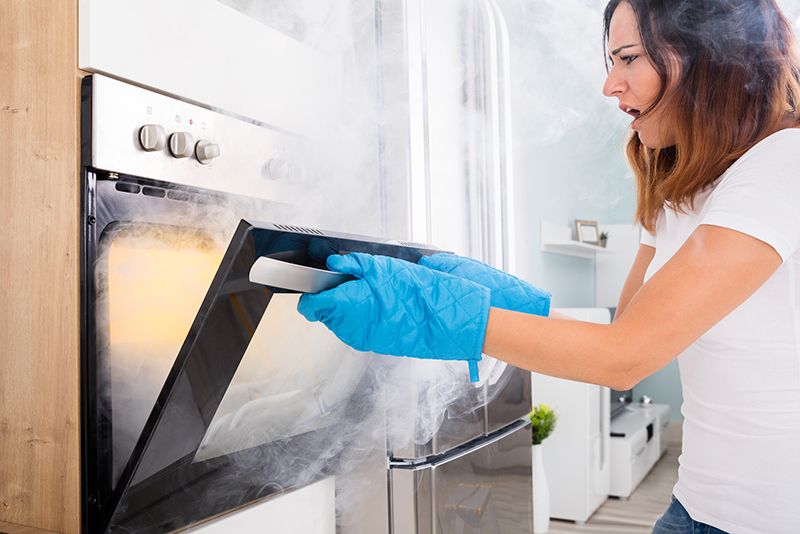
There are a few universal "dreaded" jobs everyone hates to do—among the top-ranked, ironing their clothes and cleaning their oven.
So, it's likely when you bought your last oven. You were really excited to see that it had a "self-cleaning" feature. Goodbye to the days of smelly cleaner fumes and back-breaking scrubbing, and hello to a sparkling clean oven with just the touch of a button.
Not so fast!
While oven manufacturers have tried to develop features that take the "work" out of housework, the self-cleaning component of many newer models can actually cause some serious problems with your appliance.
Surprisingly, for every 10 jobs FIX Appliance CA technicians respond to, every fourth or fifth request is related to self-cleaning problems. We want to help you avoid major issues with your own oven, so let's examine the process and the potential concerns:
What is a self-cleaning oven?
A self-cleaning oven is a feature on many modern ovens that burns off cooking spills and splatters with an extremely high temperature (932 F° or 500 C°) to aid in cleaning. A cycle typically takes several hours to complete, and for safety measures, it automatically locks the oven door closed until it has sufficiently cooled.
Self-cleaning ovens often cook more efficiently as they are manufactured with more housing insulation to withstand the high temperature needed during cleaning.
How Self Cleaning Ovens Work
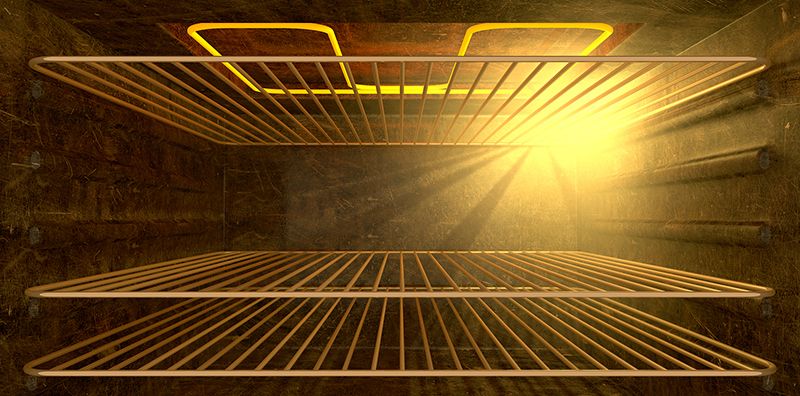
Most name-brand manufacturers offer a self-cleaning oven feature, including Blomberg, Bertazzoni, Bosch, DCS Fisher & Paykel, GE, Electrolux, Frigidaire, Fulgor Milano, Jenn-Air, KitchenAid, Kenmore, LG, Panasonic, Maytag, Viking, Whirlpool, Wolf, Samsung and more. Each has a variation of sidewall coatings that are made from heat- and acid-resistant porcelain enamel. As temperatures inside the oven increase, any leftover food particles will be burnt to ash.
Step 1—Empty it out
Before you start the cycle, make sure to remove everything inside the oven. Empty the racks, pots and pans, cookie sheets, aluminum foil or anything else that's being stored inside.
There is no need to use any chemical oven cleaners on the internal surfaces. However, you may need to use a strong oven cleaner on racks when you wash them in the sink.
Racks left inside the oven during the cleaning cycle will appear dull afterward. Vegetable oil is a good option to restore the sheen to the metal.
Step 2—Lock her down
Once the stove is empty, the locking door system can be activated. Although there is a manual locking mechanism, generally, you should use the automatic system that latches with an electric motor and switches. This mandatory latch is an important safety feature that prevents accidental injury and burns.
Step 3—Press the button
Before starting the process, recognize that it will take approximately three to four hours to complete the cycle. Make sure never to use this feature when the home is unattended. The intense heat needed to burn off leftover food particles and grease can produce smoke that may set off your smoke detector.
All heat elements will be activated during this phase, and the temperature inside your oven can reach more than 1292 F° or 700° C, much higher than is needed for cooking. You'll want to open a window slightly to cool the room and run an exhaust fan to reduce the amount of smoke and odours in the air.
Step 4—Be patient
A safety feature of the system uses a mechanical interlock to keep the oven door closed and locked until the temperature inside reaches approximately 572 F° or 300° C. This is set this way to prevent possible burn injuries, so the latch won't unlock until the oven has completed both the clean and cool-down phases. Once it reaches the right temperature, it will automatically unlock.
Step 5—Wipe it down
Even after the door unlocks, you'll want to wait a couple more hours for the oven to cool sufficiently to wipe down the inside. You'll need to remove the ash residue with a sponge or damp cloth. Areas around the seals and door edge will require a more thorough hand cleaning with hydrogen peroxide as they will not do this area.
How Often Should it be Run?
There is conflicting information between manufacturers about how often the self-cleaning feature should be run. Some recommend running the cycle monthly to prevent heavy build-up, while others suggest limiting use to a maximum of six times per year. This is to save energy and appliance wear and tear.
You should always follow the manufacturer's recommendations for your specific appliance.
This is where things get a little challenging.
Is it worth having a self-cleaning oven?
Let's take a look at some of the pros:
- Convenience—obviously, the primary appeal of a self-cleaning oven is that you won't have to use harsh oven cleaners or scrub spills and burned on food by hand. You can spend three to four hours during the self-cleaning process to do other chores or something more enjoyable.
- Energy Savings—your oven is equipped with extra heavy insulation to help it achieve the high temps needed for cleaning. This means less heat loss during regular cooking and more efficient energy use. If you run the self-cleaning cycle immediately after cooking, the already high oven temperature will reduce the energy used to get it up to the maximum level needed.
- Cost—appliance manufacturers suggest the extra cost of purchasing a self-cleaning oven is offset by its convenience and time-saving attributes. They also indicate that the energy savings achieved during cooking (due to extra insulation) and no need to purchase pricey chemical cleaners also balance the initial expenditure.
The big reveal.
Now that we've examined exactly what self-cleaning ovens are designed to do let's really understand the negative impact and potential hazards associated with this feature.
1. Major Parts Damage
The extremely high temperature required to run the self-cleaning cycle can significantly compromise major components of your oven.
Locking mechanism
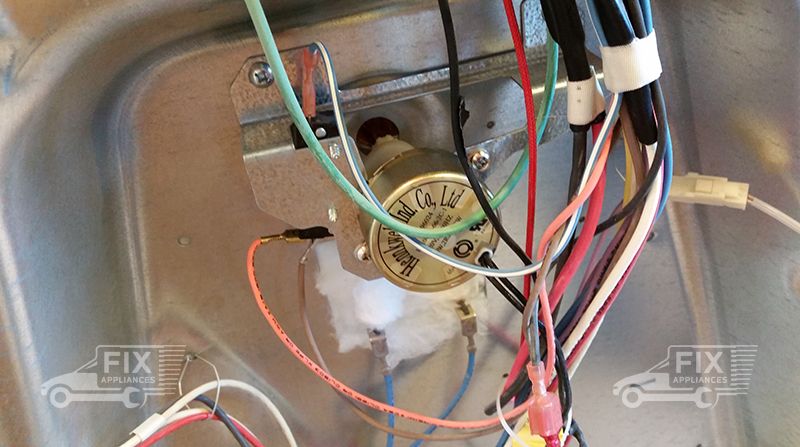
This is the assembly that is supposed to lock and unlock automatically after the cycle is complete. It's common for this to malfunction and gets stuck in the locked position. This will require a service call and part replacement.
Thermostat/Thermal fuses
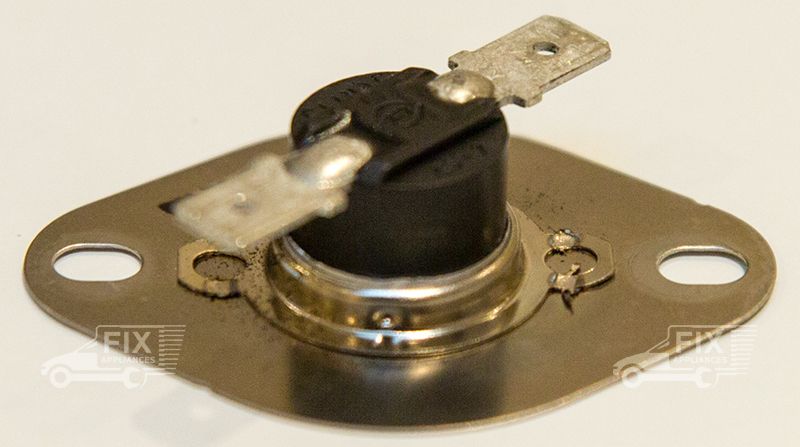
These safety features control the temperature settings for conventional cooking. They are positioned on top of the oven or the oven walls and can be damaged or "pop" from the high heat. This can lead to inaccurate temperature readings to undercook or overcook your food (a health hazard) or make the oven stop working entirely. This will also require professional oven repair.
Electronic boards/Touch panels
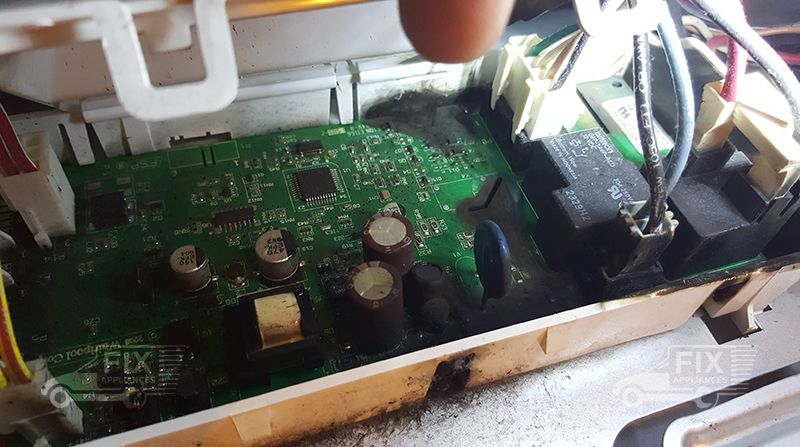
Aka "the brain," these control units work together to make sure your oven responds to your orders. These components sit on top of the oven and can be affected by the intense heat generated from self-cleaning. You may see error codes, the oven may turn on and off at will, or everything may just shut down completely. These parts are costly to replace and will definitely require an appliance technician to correct them.
Wires and contact terminals
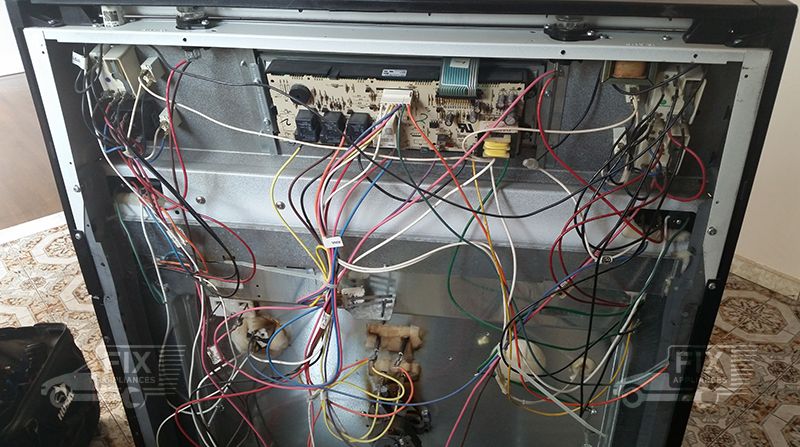
A maze of wires and connectors distribute electricity to all parts of your stove. While they are covered with thermal insulation to protect them from the heat of normal cooking, the extreme and prolonged temperature needed for the self-cleaning mode may melt the insulation and damaged the wiring. Pinpointing the exact problem area could require numerous visits and significant troubleshooting.
Miscellaneous interior components
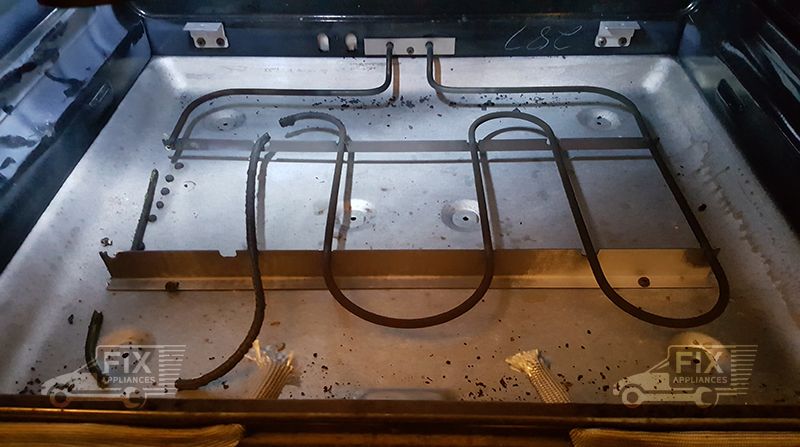
Everything from the light bulbs and glass housings to thermal sensors to the enamel inside your oven could be damaged from the process. While these parts may not fail on the first use, continued applications will definitely compromise every part inside your oven.
If your oven shows an error code during or soon after using the cleaning mode, it's likely related. Consult your owner's manual to identify the error code and contact FIX Appliances CA to schedule a quick-response service call. Here's a quick table of error codes for Whirlpool, Maytag, Frigidaire, Electrolux, GE (General Electric), Ikea and Kenmore range stoves:
| Errors – Locking mechanism | Errors – Electronic Oven Controls (EOC) |
|---|---|
| F5 – E1 | F1 – E0 |
| F5 – E2 | F1 – E1 |
| F5 – E3 | F1 – E2 |
| F5 – E4 | F1 – E4 |
| F5 – E5 | F0 |
| F5 – E6 | F1 |
| F9 | F2 |
| Errors – Locking mechanism | Errors – Electronic Oven Controls (EOC) |
|---|---|
| F90 | F10 |
| F95 | F11 |
| F8 | F12 |
| F9 | F13 |
| Errors – Locking mechanism | Errors – Electronic Oven Controls (EOC) |
|---|---|
| FC | FF or FFF |
| F0 or F1 or F2 |
2. Dangerous Smoke, Odours and Carbon Monoxide
Failure to remove bigger pieces of food debris or liquid from your oven before running the self-cleaning feature can lead to excessive smoke and foul odours. In addition, those pieces may not break down into ashes but bake on even harder. Sugary foods and spills can create enough smoke to set off fire alarms or cause eye and breathing issues.
Worse yet, a study by the North Iowa Municipal Electric Cooperative Association discovered that carbon monoxide is produced when food residue is burned during the self-cleaning cycle. This poisonous gas is odourless, tasteless, and invisible. Carbon monoxide is responsible for thousands of injuries and deaths every year. You must open windows and run an exhaust fan to dissipate gas fumes during the cleaning process. Keep a working carbon monoxide detector in your home, as there is no way to eliminate carbon monoxide emissions when using this function.
3. Family Safety
Children and pets can be at great risk of burns as the oven's exterior also gets extremely hot, so you should never leave kids or animals in the kitchen unattended while cleaning.
Toxic fumes emanating from the smoke cloud can also be dangerous to anyone with asthma or respiratory diseases. The Teflon coating inside your oven can break down when exposed to high temperatures, and inhaling the fumes can lead to breathing issues, coughing, sweating, chills and flu-like symptoms.
Animals, especially birds, are also at risk from smoke and fumes. Large amounts of oxygen are required to maintain a bird's flight muscles. The toxicity in the off-gasses can quickly permeate through the bird's body and even cause death.
Ventilating the kitchen is not sufficient to protect your family or animals from breathing in harmful fumes. If you use the self-cleaning feature on your oven, make sure family members (including children) and animals are as far away from the room during the process.
4. Fire Hazard
Last but certainly not least, the self-cleaning feature can present a fire hazard. Even if you've removed all the larger food particles, you'll likely have grease or cooking oil splatters and spills to burn off. With an inside temperature exceeding 500° C, and a flashpoint (the temperature at which items can self-combust without an ignition source) between 750 to 815°F° or between 400 to 435° C, your leftover pepperoni grease can start on fire.
A word of advice: If your oven does catch on fire during the clean cycle, don't try to put it out. Even if the oven has cooled sufficiently for the door to open, doing so will allow oxygen to rush in and fuel the flames. Obviously, if it is fully engulfed, get out of the house and call 911.
So, now what?
Now that you understand all the pros and cons of using the self-cleaning feature on your oven, you may be wondering what other alternatives might be available to safely removing grease and grime.
Consider These Options:
Manual Cleaning Method
- Commercial cleaners—these usually come in spray form and can be quite harsh but are very effective at removing debris and grease without extreme temperature or difficult scrubbing. Proper room ventilation and protective gloves will be needed.
- All-natural cleaners—Eco-friendly products like baking soda, white vinegar, lemon juice, dish soap and cream of tartar can all be used to rid your oven of stubborn food stains without using toxic chemicals. There are several recipes for all-natural cleaning that combine products to produce a paste. Allowing the mixture to sit overnight or bake at low temperature for an hour will loosen grime and easily wipe clean with a damp sponge.
New Technologies
If you're in the market for a new oven and want to avoid the current self-cleaning options, Whirlpool and Bosch have both introduced their technologies:
- Whirlpool with Aqua-lift uses a special coating that activates water and low-temperature heat to remove dirt and debris easily.
- Bosch with Eco-Clean—includes a ceramic coating on the back wall of the oven (ceiling and side walls can be upgraded) to reduce spills from sticking.
Before buying any home appliance, always do your research. Watch and read technology descriptions and reviews, ask questions on local forums or ask local appliance repair experts.
Conclusion
How you maintain your oven is a personal preference, but keep in mind that a high percentage of service calls are due to failures related to the self-cleaning feature.
Always consult your owner's manual for recommendations for using the clean mode on your appliance. Feel confident that FIX Appliances CA will be their appliance installation in Toronto or help problems arise.
Do you have problems with your oven?
Our oven repair experts will properly diagnose and fix your oven or stove. Same Day repair service available.
For Same-Day service, our local company with its local technicians serving the GTA and southern Ontario. We'll be more than happy to help you. Request range, stove, oven or outdoor kitchen Toronto repair now at toll-free: 888-242-0777
New available to repair refrigerators in Ottawa, Kanata, Nepean or other areas of Southern Ontario in the same day service. Would you please reach us at 613-900-1979? Call before noon to check availability. We always try to find a free spot on our schedule for your repair.
Talk to our experts in your city!
- Appliance Repair in Barrie
- Appliance Repair in Ottawa
- Appliance Repair in Collingwood
- Appliance Repair in Newmarket
- Appliance Repair in Toronto
- Find your city…
Fix Appliances CA™ is here for you, even during such times.
By appliance repair expert Oleg Ch.
How To Use Self Clean Frigidaire Gallery Oven
Source: https://fixappliances.ca/4-reasons-stop-using-self-cleaning-oven-feature/
Posted by: vignajuslithe.blogspot.com

0 Response to "How To Use Self Clean Frigidaire Gallery Oven"
Post a Comment